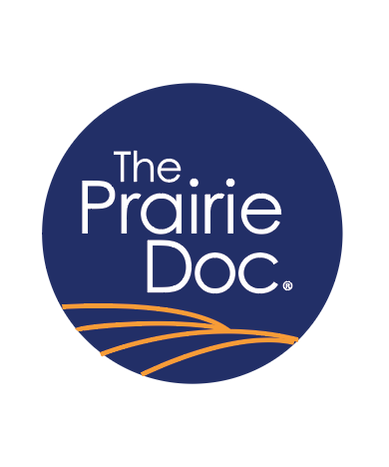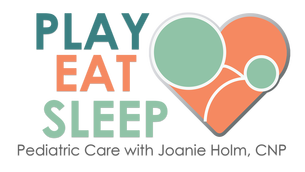Let’s Get Some SleepBy Andrew Ellsworth, M.D.
Indeed, there is a lot we can worry about in the world today. It can be so easy to let those problems invade our thoughts as we try to get some sleep. Ideally, our bedrooms are sanctuaries of peace and quiet and places of rest. But televisions, phones, computers, and other devices bring the world and its problems to our beds, and this is not healthy. Sleep is one of the best ways to help keep our immune system strong to fight off infection and illnesses. And now more than ever, it is important to give our bodies the best chance at fighting off a cold, flu, and disease. Adults need seven to eight hours of sleep every night, while teenagers and elementary children need nine to ten hours. Regular exercise is one way to help us sleep better. It is best to exercise during the day rather than right before bedtime. We sleep better if we avoid eating large meals within two to three hours of going to bed. But this doesn’t mean we must go to bed hungry. We can reach for a small healthy snack like carrot sticks or apple slices. It can also help to keep a regular schedule and have a bedtime ritual, such as brushing our teeth after that final snack. Reduce caffeine and alcohol consumption, especially near bedtime. And when stressed, we can prepare for better sleep if we take time to relax by gentle stretching, meditation, prayer, or deep breathing. We can help ourselves by changing our behaviors, but if we experience persistent heartburn or reflux, restless legs, snoring, daytime fatigue, or use the bathroom frequently at night, it’s time to visit the doctor for assistance. Finally, it helps to keep the bedroom comfortable, quiet, dark, and cool. Despite all their conveniences, consider removing those electronic devices from the bedroom. Screen time before bed, whether watching television, phones or laptops is a large and growing reason for insomnia. The bright light from screens tricks our minds into thinking it is daytime so be sure to use the night filter to decrease the amount of light they emit. And, since our bedroom is meant for sleeping, why not set a firm time to turn off all the devices for the day. “You better get up; people die in their sleep.” That’s what my dad would say when he was trying to get me out of bed as a teenager. While true, the reverse is also valid, people can die from problems stemming from lack of sleep. So, let’s get some sleep and stay healthy out there people! Andrew Ellsworth, M.D. is part of The Prairie Doc® team of physicians and currently practices family medicine in Brookings, South Dakota. For free and easy access to the entire Prairie Doc® library, visit www.prairiedoc.org and follow Prairie Doc® on Facebook featuring On Call with the Prairie Doc® a medical Q&A show streaming on Facebook and broadcast on SDPB most Thursdays at 7 p.m. central. The Psychology of Smoking CessationBy Kelly Evans-Hullinger, M.D.
As a primary care physician, I commonly encounter patients who smoke cigarettes. Most people, including those who smoke, are aware of the long term health risks posed by smoking. Of course, as a physician who cares about their current and future health, I want these patients to embrace the goal of smoking cessation. As someone who has never been a smoker myself, I admit I cannot fully understand the struggle of this task. However, the data suggest that quitting smoking can be extremely difficult. I find it helpful to understand some basic psychology when it comes to smoking cessation. In the 1970s, a duo of scientists named Prochaska and Diclemente, after studying subjects who smoked and their likelihood of successfully quitting, developed the Transtheoretical Model of Stages of Change. This model is widely used today to assess readiness for change when it comes to smoking and other lifestyle changes such as diet, exercise, alcohol and other substance use. The following explains each stage and how we can apply them to help with smoking cessation: Precontemplative stage: A person has no intention of changing their behavior soon. In this case, I “plant the seed” by providing some basic education and encouraging the patient to think about it before the next visit. Pushing or forcing change at this stage is not likely to be fruitful. Contemplative stage: A person is thinking about making a change, perhaps in the next six months, but they may not be ready for a definitive plan. I offer specific education about quitting and ensure follow up to help with planning when they are ready. Preparation stage: A person is ready to implement change in the next 30 days. Time to cheer on my patient and set them up for success! We might set a quit date together, consider referral to the Quitline, and discuss more specific strategies, including medication or nicotine replacement. Action stage: This is the first six months of the big change, during which patients have a high risk of relapse. It is crucial that the patient check in often with me, their Quitline counselor, and other support people. Maintenance stage: After the action stage, risk of relapse decreases but does not go away. I offer my patients a safe place to discuss their urge to smoke and encourage them to stay tobacco-free. If they do slip up, I remind them not to give up. I help them focus on the hard work they’ve already done and stay successful. Quitting smoking can be difficult, but it is truly one of the best things a person can do for their long-term health. There is support out there, starting with your primary care provider. When you are ready, ask for help! Kelly Evans-Hullinger, M.D. is part of The Prairie Doc® team of physicians and currently practices internal medicine in Brookings, South Dakota. For free and easy access to the entire Prairie Doc® library, visit www.prairiedoc.org and follow Prairie Doc® on Facebook featuring On Call with the Prairie Doc® a medical Q&A show streaming on Facebook and broadcast on SDPB most Thursdays at 7 p.m. central. Dental Health Affects Overall WellnessBy Debra Johnston, M.D.
I remember feeling jealous of my grandparents as a child. During one of our summer visits, I realized that while my siblings and I were told to brush our teeth, my grandparents would simply pop their teeth out and drop them into a glass. That seemed like a lot less work! Besides, I thought that no teeth would mean no trips to the dentist, and thus no poking and prodding of sharp instruments in my mouth. Although our dentist and his team were unfailingly caring and gentle, I was always nervous. As I recall, when I expressed my newfound enthusiasm for the convenience of false teeth, Grandma informed me that wearing dentures would mean giving up fresh corn on the cob. That was all the incentive I needed. I kept brushing. Soon, I realized that a healthy smile meant something more than the ability to enjoy garden bounty. I sensed my tough-as-nails mother and grandmother each were ashamed of their smiles. Without understanding why, I could see that people were judged by the condition of their teeth. Dental health seemed to be an indication of a person’s place in society. With the benefit of age, and medical training, I learned that the impact of dental disease goes well beyond dietary inconvenience and social embarrassment. People with unhealthy mouths may suffer from malnutrition, which can be both a cause and an effect of their dental problems. Others may unfairly perceive them as less trustworthy, and less employable. Emergency rooms and medical clinics see the consequences of delayed or absent dental care. Patients seek antibiotics and pain medicines to “get them by” until they can see a dentist. These treatments may convert a raging infection to a smoldering, but temporarily bearable, one. However, they don’t fix the underlying problems. There is another layer to the interplay between dental and physical health: many medical diseases and their treatments may cause or worsen dental problems. The antidepressant I give a patient might cause dry mouth, which worsens tooth decay. The medicine to prevent a broken hip may severely damage the bone of the jaw. Diabetes increases the risk for dental disease which in turn, can worsen a person’s diabetes management. Additionally, research shows that poor dental health increases our risk for heart attacks and could possibly lead to premature births. All in all, there are myriad reasons to take care of our teeth and gums, no matter our age. So, thanks, Grandma, for convincing an impatient child to keep brushing. Debra Johnston, M.D. is part of The Prairie Doc® team of physicians and currently practices family medicine in Brookings, South Dakota. For free and easy access to the entire Prairie Doc® library, visit www.prairiedoc.org and follow Prairie Doc® on Facebook featuring On Call with the Prairie Doc® a medical Q&A show streaming on Facebook and broadcast on SDPB most Thursdays at 7 p.m. central. The First GoodbyeBy Jill Kruse, D.O.
When you ask a physician why they became a doctor there is often a pattern that emerges. It is usually one of three things: they have family members who were doctors, they went through a significant health issue of their own, or they had a family member or close friend who when through a serious health issue. In my case, it was the latter. Sadly, there have been many such experiences with people I love but let me share with you the first I can remember. I was five years old. She was my neighbor, the only person who could over-rule my mother on how long I could stay at her home playing or how many cookies I could eat when we had tea parties. She was the first grown up who treated me like an adult. When she was admitted to the hospital on hospice, my mother tried to prepare me for what I would see, telling me that our friend no longer had hair. I told her that I didn’t care, I missed her, and I just wanted to see her. The memory is so strong that I can still smell the faint antiseptic in the air from the tile floors. The room was dimly lit with a fluorescent light over the head of the bed. My neighbor sat in the bed, her gown hanging on her frame that was now gaunt and her beautiful hair now just a memory, robbed by the chemotherapy. We could not stay long, children under twelve years old were not technically permitted into patient rooms at that time. I said “Hi” and gave a shy wave not knowing what else to do or say. It was enough to just be there together. My friend, that powerful woman, looked so small and frail in her bed. The woman who I knew to be so full of life was now living in the shadow of death. I did not know it at that time, but that would be the last time I saw her alive. Pancreatic cancer took her away from me just a few months after the diagnosis was given. I had so many questions. Most of them started with “Why?” That was the first time I had ever been in a hospital, but it would be just one of many times throughout my life where I would be a concerned loved one visiting a sick friend or family member. The death of my neighbor started my journey to become a doctor, a journey to find answers, only to learn that there is always another patient and another question, yet I persist. This is how I honor her memory. Jill Kruse, D.O. is part of The Prairie Doc® team of physicians and currently practices family medicine in Brookings, South Dakota. For free and easy access to the entire Prairie Doc® library, visit www.prairiedoc.org and follow Prairie Doc® on Facebook featuring On Call with the Prairie Doc® a medical Q&A show streaming on Facebook and broadcast on SDPB most Thursdays at 7 p.m. central. |
Archives
July 2024
Categories |
 RSS Feed
RSS Feed


